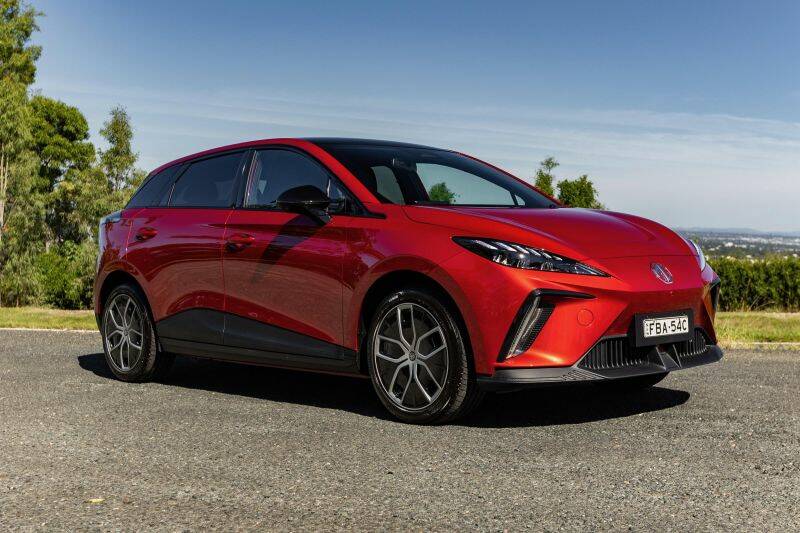
MG Motor Australia has announced the upcoming launch of the new MG 4 electric hatchback, which was revealed in China earlier this year. This model will not replace the existing MG 4 but will be positioned beneath the current rear- and all-wheel drive variants in the Australian market. The new front-wheel drive version is set to debut in the second quarter of 2026, according to CEO Peter Ciao.
“This new front-wheel drive model will be a completely different vehicle, perfect for the city,” Ciao stated. He emphasized that the decision to introduce a front-wheel drive option was driven by the need to balance driver requirements with production costs. The front-wheel drive MG 4 aims to provide an affordable alternative to the rear- and all-wheel drive models, which have gained popularity among consumers.
The new MG 4 will feature two battery options: a 43kWh and a 54kWh battery. In contrast, the existing MG 4 will only be available with a larger 64kWh battery pack, which has been a staple in the lineup. As part of the transition to this new model, MG will discontinue the base 51kWh and long-range 77kWh options in Australia.
Despite the introduction of the new front-wheel drive variant, MG plans to upgrade the current rear- and all-wheel drive models, which will see an increase in price. Ciao is encouraging buyers to take advantage of the current pricing before these changes take effect, with some models priced under $40,000 drive-away.
The existing MG 4 offers a range of battery options, with the 51kWh providing a WLTP range of 350km, the 64kWh offering between 400km and 450km, and the 77kWh version boasting a range of 530km. The current variants also differ in power output, with the Excite 51 generating 125kW and the flagship XPower producing an impressive 320kW with dual-motor all-wheel drive.
The new front-wheel drive MG 4 will be equipped with a single electric motor producing 120kW and 250Nm of torque. Two battery configurations are expected: a 42.8kWh lithium iron phosphate (LFP) battery with a claimed range of 437km and a 53.95kWh LFP battery offering 530km. It’s important to note that these figures are based on the more lenient CLTC cycle used in China.
Notably, MG has plans to introduce a semi-solid-state battery for the new MG 4 in China later this year. The new hatchback will come with different suspension setups, featuring MacPherson strut front suspension and a torsion beam rear, as opposed to the multi-link independent rear suspension found in the existing MG 4.
Inside the vehicle, drivers will find an array of practical features, including 30 storage spaces and a 98-litre concealed dry/wet separation storage compartment beneath the boot floor. Additional amenities, such as soft-light mirrors for makeup touch-ups, a ventilated 50W wireless phone charger, and a spacious interior with a “king bed mode” for rear seat configuration, enhance the overall user experience.
The MG 4 boasts a 10.25-inch touchscreen infotainment system as standard, with an optional 15.6-inch unit that integrates MG’s partnership with Oppo for smart connectivity features. Buyers can also expect options like heated and ventilated front seats, a heated steering wheel, and a panoramic glass roof with a power sunshade.
In terms of dimensions, the new MG 4 measures 4395mm in length, 1842mm in width, and 1551mm in height, with a wheelbase of 2750mm. This makes it slightly larger than the current MG 4, providing more interior space and storage capability. The vehicle’s weight varies between 1415kg and 1485kg.
Pricing for the new front-wheel drive MG 4 has yet to be confirmed, but it will likely compete against models like the BYD Dolphin, which starts at $29,990 before on-road costs, and the GWM Ora, currently priced from $33,990 drive-away. The existing MG 4 has previously been available from $30,990 drive-away, suggesting the new model may aim for a similar market segment.
As MG prepares for the introduction of the new MG 4 in Australia, it aims not only to expand its electric vehicle lineup but also to meet the evolving demands of environmentally conscious consumers.







